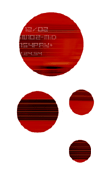

 |
 |
scientific program electroacoustic musics around set theory music analysis tools musicnetwork workshop professional week ircam forum workshops free software for music international multichannel sound forum performing arts and technologies dance and new technologies access to sound heritage thematic evenings demonstration stands artistic program set theory concert music in creation concert cursus concerts opera "one" sound installations open house weekend technologies gallery conferences demonstrations workshop-performances workshops and films ircam laboratories linux install-party concert distribution on internet associated events resonances night at glaz'art émilie simon at la cigale suguru goto reseaunances guided tours of ircam and the multimedia library resonances in pictures resonances 2002 
|
MAKIS SOLOMOSAnalysis of "Orient-Occident" by Iannis Xenakis.AbstractOrient-Occident (1960) is very different from the other electroacoustic pieces of Xenakis (and even from his whole music) : it is a music that sounds at first sight very close to the aesthetics of GRM (of that time). While Diamorphoses, Concret PH, Analogique B and Bohor - the other pieces that Xenakis composed in the end of the 1950s and beginning of the 1960s at the GRM - are oriented toward the construction of totally new macro-sonorities resulting from the fusion of micro-sonorities (attempts to simulate the not yet invented granular synthesis in Concret PH and Analogique B, continuum in Diamorphoses and even more in Bohor), Orient-Occident is working on the level of sound object in the schaefferian sense of the term. (Besides, some sound objects, clearly audible, are probably taken from GRM's sound library -we can hear them in particular in the fourth piece of Schaeffer's Etudes aux objets, "Objets liés"). This observation can be explained, in some extent, by the fact that the piece is narrative and descriptive (it was composed for the soundtrack of a short film by Enrico Fuchignoni). But, on the level of sound objects' montage, Orient-Occident doesn't follow the schaefferian project, which is characterized by the attempt to replace the note by the sound object in the hope of remaining into the traditional definition of music - music as language -, where there is an articulation level fitting to the idea of "syntax". |
|||||||||||||||||||||||||||||||
 |
Organization Committee Copyright Ircam-Centre Pompidou 2003 |